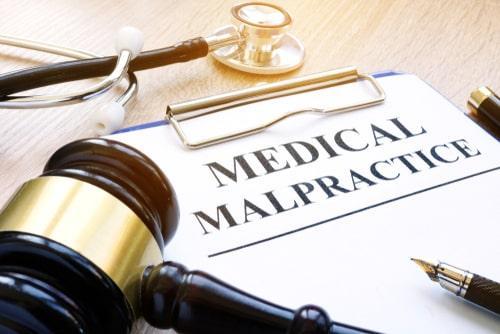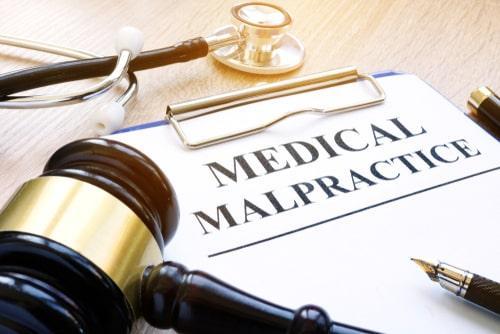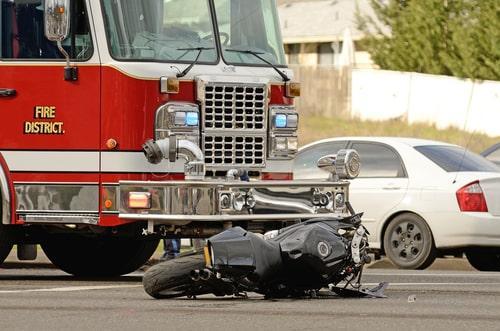121 S. Wilke Road, Suite 301, Arlington Heights, IL 60005
Home and Hospital Visits for Your Convenience
Serving Clients Across 7 Illinois Locations
Recent Blog Posts
Proving a Medical Malpractice Claim in Illinois
 Medical malpractice is, unfortunately, not uncommon in the United States. According to leading medical experts, medical errors have become the third-leading cause of death in the U.S., right behind heart disease and cancer. Medical mistakes cause somewhere around 250,000 deaths each year - yet many of them are preventable. Medical malpractice can cause injuries that lead to lifelong disabilities or even death, though malpractice claims can be tricky to prove. Understanding how you must prove the negligence of a doctor is crucial to a successful medical malpractice lawsuit.
Medical malpractice is, unfortunately, not uncommon in the United States. According to leading medical experts, medical errors have become the third-leading cause of death in the U.S., right behind heart disease and cancer. Medical mistakes cause somewhere around 250,000 deaths each year - yet many of them are preventable. Medical malpractice can cause injuries that lead to lifelong disabilities or even death, though malpractice claims can be tricky to prove. Understanding how you must prove the negligence of a doctor is crucial to a successful medical malpractice lawsuit.
Three Elements of Medical Negligence
There are three things that you must prove when it comes to medical negligence in Illinois. First, you must prove that the standard of care that your physician owed to you was violated. Second, you must prove that an injury resulted from that violation, and third, you must prove that your injury had damaging consequences on your health. All three elements must be proven in order for your case to be considered legitimate.
Did a Defect in Your Car Make Your Accident Worse?
 Every year, thousands of people are severely injured or even killed in car accidents. Sometimes the cause of the injuries seems obvious. However, in some instances, a defect or malfunction in your car may have made your injuries worse than they otherwise would have been.
Every year, thousands of people are severely injured or even killed in car accidents. Sometimes the cause of the injuries seems obvious. However, in some instances, a defect or malfunction in your car may have made your injuries worse than they otherwise would have been.
Discovering Automobile Defects
While some vehicles become notorious for their defects, other more routine defects pass through unknown to most people. For example, some SUVs are well known to have a higher risk of rollover rates or roof-crush injuries. It is much lesser-known, however, that there are thousands of components in a car that may not be working properly which could make injuries in a car accident much worse.
In many cases, such defects will not be discovered unless a crash reconstruction expert examines the evidence. The expert may find that a seatbelt or airbag failed to work as designed. It may become clear that your injuries were actually made worse caused by something inside your own car.
Emergency Room Mistakes Can Lead to Medical Malpractice Claims
 You may be surprised to learn that medical errors are the third leading cause of death in the United States. One Johns Hopkins study estimates that 250,000 and 440,000 people pass away every year due to medical mistakes across the country. When you or a loved one has an unexpected medical emergency, you may drive to the emergency room to get the medical care you need. Although the majority of hospital emergency rooms safely provide the life-saving care that patients need without error, emergency room mistakes do happen.
You may be surprised to learn that medical errors are the third leading cause of death in the United States. One Johns Hopkins study estimates that 250,000 and 440,000 people pass away every year due to medical mistakes across the country. When you or a loved one has an unexpected medical emergency, you may drive to the emergency room to get the medical care you need. Although the majority of hospital emergency rooms safely provide the life-saving care that patients need without error, emergency room mistakes do happen.
ER Errors Can Be Devastating to the Victim
When someone experiences a drastic change in their health, they might be inclined to go to the emergency room. Because emergency room doctors and other medical staff are often dealing with high-stakes, time-sensitive medical emergencies, they must use extreme caution and focus when attending to patients. Unfortunately, studies show that as many as 5-10 percent of all emergency room visits involve mistakes. Some of these mistakes will not make a notable difference in the patient’s condition, but others can be the difference between whether the patient lives or dies. Some of the most common emergency room mistakes include:
Common Causes of Illinois Motorcycle Crashes
 With warmer weather quickly approaching, many riders are gearing up for rallies, runs, and good old-fashioned cruises. Sadly, the upcoming riding season also means headlines will soon feature motorcycle crashes. The "lucky" ones will suffer injuries that will one day heal. Others will suffer serious and life-altering injuries. Still others will experience a devastating crash – one that marks the end of their last ride.
With warmer weather quickly approaching, many riders are gearing up for rallies, runs, and good old-fashioned cruises. Sadly, the upcoming riding season also means headlines will soon feature motorcycle crashes. The "lucky" ones will suffer injuries that will one day heal. Others will suffer serious and life-altering injuries. Still others will experience a devastating crash – one that marks the end of their last ride.
What is most devastating about these crashes is that many will be the fault of another driver – someone who acted in a negligent way and then cost a family or rider a life, a limb, mobility, money, or employment. In such situations, the victim may be owed compensation. The following explains further and provides you with some key details on protecting your rights.
Negligence is a Common Factor in Motorcycle Accidents
Despite all the campaigns to "look twice and save a life," the failure to register or "see" a motorcyclist is one of the most common factors in motorcycle crashes. Another major issue and contributing factor in motorcycle accidents is a driver’s failure to yield when the motorcyclist has the right of way. An intersection where the motorcyclist is turning left is the most common situation in which this occurs, but it can also happen when the motorcycle is on a straightaway and the other driver must enter the motorcyclist’s path to merge into traffic. All it takes is a moment of inattention by a driver for a tragic accident to take place.
A Dog Has Bitten My Child. Now What?
 Many, if not most, dogs are lovable, loyal companions. However, it is important to remember that dogs are still animals and that animals have the potential to attack and seriously injure a person. Severe dog bite injuries can cause permanent damage and disfigurement or even death. Dog bites can be especially detrimental to children. If your child was bitten by a dog, you may be wondering whether or not the dog’s owner is liable for the attack.
Many, if not most, dogs are lovable, loyal companions. However, it is important to remember that dogs are still animals and that animals have the potential to attack and seriously injure a person. Severe dog bite injuries can cause permanent damage and disfigurement or even death. Dog bites can be especially detrimental to children. If your child was bitten by a dog, you may be wondering whether or not the dog’s owner is liable for the attack.
Strict Liability Dog Bite Laws in Illinois
Unlike some other states, Illinois uses the principle of "strict liability" when it comes to dog bites. A dog owner is liable for a dog bite injury even if the owner did not know the dog was aggressive. Even if a dog has never bitten or attacked someone before, the owner is legally responsible for the damages the dog causes in a bite attack. Strict liability also means that the victim does not need to prove that the owner was negligent or allowed the bite to occur.
Alcohol and Drug Addiction Among Truck Drivers Contribute to Dangerous Crashes
 The trucking industry is absolutely essential to the flow of goods across the United States. An estimated 80 percent of U.S. cargo is transported by hard-working men and women who drive tractor-trailers, 18-wheelers, and other large trucks. Driving a semi-truck across the country can be a tedious and isolating job. Truck drivers are expected to endure harsh road and weather conditions, long periods of time away from family and friends, and erratic sleep schedules. Unfortunately, some truck drivers turn to drugs and alcohol to cope with the strenuousness of their job. Considering how destructive truck accidents can be, the prevalence of drug and alcohol use in truck drivers is extremely concerning.
The trucking industry is absolutely essential to the flow of goods across the United States. An estimated 80 percent of U.S. cargo is transported by hard-working men and women who drive tractor-trailers, 18-wheelers, and other large trucks. Driving a semi-truck across the country can be a tedious and isolating job. Truck drivers are expected to endure harsh road and weather conditions, long periods of time away from family and friends, and erratic sleep schedules. Unfortunately, some truck drivers turn to drugs and alcohol to cope with the strenuousness of their job. Considering how destructive truck accidents can be, the prevalence of drug and alcohol use in truck drivers is extremely concerning.
Fatal Truck Accidents Kill Thousands per Year
The same features that make 18-wheelers and other large trucks so useful for transportation make them deadly during a traffic accident. A large truck cannot maneuver through traffic the way an average-sized vehicle can. If a stalled vehicle suddenly blocks the road ahead, for example, cars may have enough time to dodge the stalled vehicle or come to a stop. A fully-loaded tractor-trailer takes approximately 20-40 percent farther to come to a stop than a small car does. This difference in stopping time can mean the difference between life and death. Data shows that there are more than 5,000 truck accident fatalities in an average year in the United States.
What Are Your Rights as a Pedestrian in Illinois?
 Warmer weather is right around the corner, and more people will be out walking for exercise, commuting to work, or running errands. However, what started as a healthy pursuit could turn dangerous if you are involved in an accident with a motor vehicle. After years of falling pedestrian accidents and fatalities, numbers have risen again in the last five years, with hundreds of pedestrians injured every year. In 2021 alone, 215 pedestrians were killed in Illinois traffic crashes. Negligent drivers may be speeding, driving recklessly, distracted by cell phones or other devices, or simply not looking out for pedestrians.
Warmer weather is right around the corner, and more people will be out walking for exercise, commuting to work, or running errands. However, what started as a healthy pursuit could turn dangerous if you are involved in an accident with a motor vehicle. After years of falling pedestrian accidents and fatalities, numbers have risen again in the last five years, with hundreds of pedestrians injured every year. In 2021 alone, 215 pedestrians were killed in Illinois traffic crashes. Negligent drivers may be speeding, driving recklessly, distracted by cell phones or other devices, or simply not looking out for pedestrians.
Pedestrian Rights and Responsibilities in Illinois
According to the Illinois Secretary of State, pedestrians have the right of way in the following circumstances. Drivers must come to a complete stop and then yield to a pedestrian:
Handling Your Medical Expenses After a Car Accident
 When a person is injured in a car accident, it is important for him or her to seek medical care. In the United States, of course, medical care costs real money. One of the most common questions after such an accident revolves around which party or parties are responsible for these costs. Depending on the details that led to your crash, the at-fault party is likely to be responsible for your medical bills, but getting your medical bills paid may take a substantial amount of time. What are you supposed to do in the meantime?
When a person is injured in a car accident, it is important for him or her to seek medical care. In the United States, of course, medical care costs real money. One of the most common questions after such an accident revolves around which party or parties are responsible for these costs. Depending on the details that led to your crash, the at-fault party is likely to be responsible for your medical bills, but getting your medical bills paid may take a substantial amount of time. What are you supposed to do in the meantime?
Covering Your Costs
Filing a claim for compensation in a personal injury situation is an important step, but processing the claim takes time. It is not always immediately clear who was at fault, and even if liability is clear, insurance companies often do not pay out claims immediately.
Your health, however, is most important, so you should not wait to get the care you need. Therefore, you might need to start by covering your own costs or having your medical care billed to your health insurance. You could also file a claim with your own auto insurance company to ensure that your bills will be covered while you wait for your personal injury compensation to arrive. If the at-fault party’s insurance does come through, your health or auto insurance carrier can recover any money paid out in advance through a process called subrogation.
What You Need to Know About Shopping and Retail Injuries
 With the spring season right around with corner, people throughout Northern Illinois will soon be looking to stretch their legs and leave winter behind them. Stores and retail outlets are likely to see a boost in sales over the next few weeks and months, but with more customers out and about, there will also be an increased risk of shopping injury. Wet floors, tripping hazards like extension cords, and falling merchandise can all pose serious threats to shoppers. Fortunately, the legal system provides protection—known as premises liability—for those injured on the property of another. At its most basic, premises liability laws require landowners to make sure that their property is safe for other people to enter, but other complications do often arise.
With the spring season right around with corner, people throughout Northern Illinois will soon be looking to stretch their legs and leave winter behind them. Stores and retail outlets are likely to see a boost in sales over the next few weeks and months, but with more customers out and about, there will also be an increased risk of shopping injury. Wet floors, tripping hazards like extension cords, and falling merchandise can all pose serious threats to shoppers. Fortunately, the legal system provides protection—known as premises liability—for those injured on the property of another. At its most basic, premises liability laws require landowners to make sure that their property is safe for other people to enter, but other complications do often arise.
Shopping Injuries
Although people do not often think of shopping as a dangerous activity unless they are lining up for a Black Friday sale, even “normal” shopping can result in a variety of injuries. The most common injuries are the result of slips and trips due to puddles, tripping hazards or poorly maintained floors. These sorts of shopping hazards can result in sprains, bruises, broken bones, and back injuries, but shoppers can experience even more severe injuries.
Can a Primary Care Doctor Be Held Liable for Medical Malpractice?
 It is not uncommon to develop a strong, trusting relationship with your primary care physician (PCP). Over time, you come to realize that your PCP is someone you rely on to look out for your best interests when it comes to your health. While most PCPs are highly trained, competent medical professionals, some such doctors occasionally make errors that lead to substantial harm for their patients. Such mistakes include failing to diagnose a condition, prescribing the wrong drug, and much more, and they can lead to patient harm that should have been prevented. If you or a member of your family has been hurt by the actions or inaction of a PCP, a qualified medical negligence attorney can assist you in determining the best course of action.
It is not uncommon to develop a strong, trusting relationship with your primary care physician (PCP). Over time, you come to realize that your PCP is someone you rely on to look out for your best interests when it comes to your health. While most PCPs are highly trained, competent medical professionals, some such doctors occasionally make errors that lead to substantial harm for their patients. Such mistakes include failing to diagnose a condition, prescribing the wrong drug, and much more, and they can lead to patient harm that should have been prevented. If you or a member of your family has been hurt by the actions or inaction of a PCP, a qualified medical negligence attorney can assist you in determining the best course of action.
When Is a Mistake Considered to be Negligence?
To become a doctor, an individual is required to successfully complete many years of education after high school, including a significant period of training on-the-job. That being said, physicians are still human, and they make mistakes from time to time. Some mistakes are essentially harmless, but others can lead to serious patient injuries or even death. When a doctor’s error causes a patient to experience new or worsening medical problems, the situation could be considered to be medical negligence.

 Spanish
Spanish


















